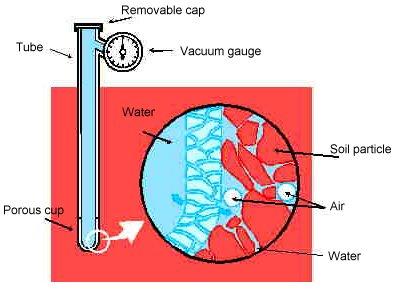Explaining tensiometers
Tensiometers are simple and reliable tools used to monitor and maintain optimum soil moisture levels. A tensiometer is a liquid filled hollow tube with a porous ceramic cup at one end and a sealed cap at the other (Figure 1).
As plants use water and the soil dries out, water is drawn out of the tensiometer through the porous ceramic tip, creating a vacuum inside the tube. A vacuum gauge can be attached for manual measurement or a remote sensing unit will allow continuous logging of tension in the soil.
The suction is measured in kilopascals (kPa) with zero representing a wet or saturated soil and a drying soil moving away from zero. At low readings (such as 10kPa), it is relatively easy for plants to get water from the soil. The higher the reading (such as 35kPa), the drier the soil and the harder it is for plants to take up water.

